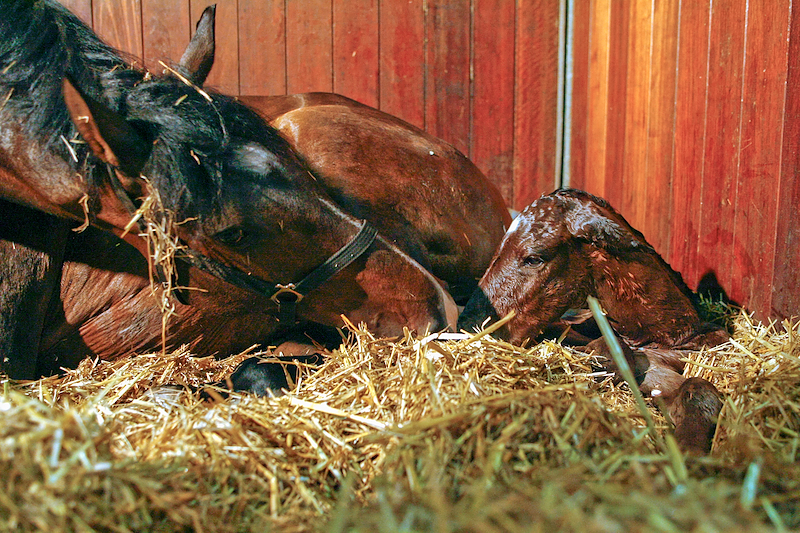New-born foal: The Birth of a Foal
For many mare owners, an exciting time has come again: the birth of their foal(s). In most mares, the delivery goes without any problems and the owner does not have to do anything. Sometimes. unexpected situations arise and help is needed, whether or not from a vet. But when is a delivery still normal and how do you recognize an undesirable situation? We will tell you everything about this subject the following weeks!
Arjon van de Riet is an equine veterinarian at Veterinary Clinic Wapenveld and is specialized in the gynecology of horses. Arjon: "One of the first signs of an approaching birth is the growth of the udder. The moment this starts is very different. Sometimes two months in advance, sometimes a month and in maiden mares sometimes just before birth. In addition, the connective tissue of the pelvic ligaments and the vulva starts to weaken. This weakening sometimes causes the mare to stand more rigidly on her hind legs. Closer to the moment of birth you will see that the udder starts to wax. At first, you will see yellowish spots, then whitish ones and shortly before foaling, it can become yellow/orange and stringy again. This is the real colostrum that will already come out. These symptoms, too, can vary enormously from one mare to another. But although the symptoms and the time of occurrence can vary greatly between mares, an individual mare has a fairly predictable pattern. So, you must know what is normal for your mare before you can notice the signs. Start looking carefully one and a half to two months before the expected delivery date, otherwise you will not see the changes.
What kind of tools do we need?
"Shortly before giving birth, you will often see a mare become somewhat restless. Sometimes a mare shows some light colic symptoms a few days before the birth of the foal. In the first phase of the birth, when the foal starts to turn from dorsopubic to dorsosacral position, you often see a mare sweating, lying down, standing up again, rolling around. That can take from half an hour to about four hours before the birth really starts." What should the mare owner have in house to be well prepared for the birth? Arjon: "Not much. A clean bucket with lukewarm water, possibly some lubricant, but that depends on how experienced the owner is, a few clean and dry towels, strings to help with the birth if necessary and betadine solution or chlorhexidine to disinfect the navel. That is all you need for a normal birth. As a rule, it happens so quickly that the mare owner hardly needs to provide any help. However, if a birth does not proceed normally, it is a matter of calling the vet very quickly, because every second counts! In that case, the things just mentioned must be present, whereby water is the most important."
Next week we will tell you more about when to call a vet at the birth of a foal. Stay tuned!
Photo: Dirk Caremans























 KWPN Database
KWPN Database KWPN.tv
KWPN.tv KWPN Horses for Sale
KWPN Horses for Sale